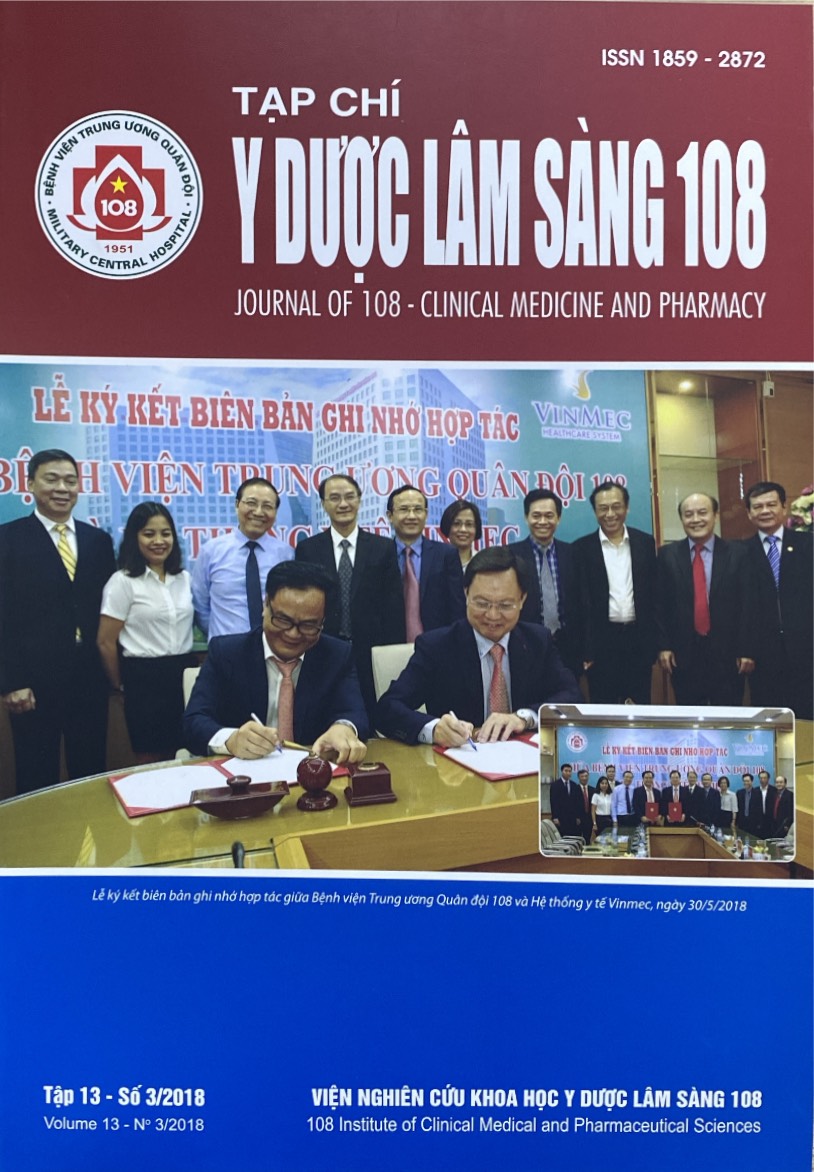Determination of factors related to ability of lymph node metastasis and results of vats lymphadenetomy in surgical treatment of non-small cell lung cancer
Main Article Content
Keywords
Abstract
Objective: To identify factors related to ability of lymph node metastasis and VATS lymphadenetomy in the treatment of non-small cell lung cancer. Subject and method: Prospective, longitudinal description, 109 cases of non-small cell lung cancer were treated by VATS lobectomy and lymphadenectomy at University Medical Center Ho Chi Minh city and Pham Ngoc Thach Hospital from January 1st 2012 to December 31st 2016. Result: An average age of 59.18 ± 10.08 (31 - 80), of which 59 males (54.1%), 50 females (45.9%). The average lung tumor size was 3.23 ± 0.91 (1.2 - 5cm). A total of 419 nodal stations examined by surgery show that there were 309 positive lymph node stations and 110 negative lymph node stations. The locations of lymph nodule and the potential of metastasis (p=0.112), the number of lymph nodule removed at each lymph node station and the probability of metastasis (p<0.001), lymph node size and the potential of metastasis (p<0.001). The locations of the lung tumors and metastasis of the lymph nodule (p>0.05), lung tumor size and lymph node metastasis (p<0.05), metastasis of lymph nodes and histopathology (p>0.05), tumor differentiation (p<0.05). The rate of ability of VATS lymphadenetomy to lymph nodule found on CT scan and intraoperation is highest at bilateral 8,9 lymph node stations and lowest at 4L station. The larger lymph node size (measured on CT scan & intraoperation), the lower ability of VATS lymphadecnetomy. Conclusion: The factors related to lymph node metastasis include: Number of lymph nodule at each station, tumor size, histopathology and tumor differentiation. However, only the location of tumor is not related. The locations and size of lymph nodule are factors related to the ability of VATS lymphadenectomy.
Article Details
References
2. Agzarian J, Fahim C, Shargall Y et al (2016) The use of robotic-assisted thoracic surgery for lung resection: A comprehensive systematic review. Semin Thorac Cardiovasc Surg 28: 182.
3. Alper T (2016) Lymph node dissection in surgery for lung cancer: Comparison of open vs. Video-assisted vs. aobotic-assisted approaches. Ann Thorac Cardiovasc Surg 22: 284-290.
4. Fei Zhao et al (2017) A prediction model for lymph node metastases using pathologic features in patients intraoperatively diagnosed as stage I non-small cell lung cancer. BMC Cancer 17: 267.
5. Harvey IP, David PC, David H.J, John DM (2010) Lung cancer principles and practicce. 4rd edition, Lippincott William and Wilkins a Wolters Kluwer Company.
6. Kohno T, Sakamaki Y, Kido T, Yasukawa M (2012) Lobectomy with extended lymph node dissection by video assisted thoracic surgery for lung cancer. Surg. Endosc 11: 354-358.
7. Lin PY, Chang YC, Chen HY et al (2010) Tumor size matters differently in pulmonary adenocarcinoma and squamous cell carcinoma. Lung Cancer 67: 296-300.
8. Nwogu CE et al (2012) Number of lymph nodes and metastatic lymph node ratio are associated with survival in lung cancer. Ann Thorac Surg 93: 1614-1620.
9. Valerie WR (2015) Lymph nodes in lung cancer. journal.publications.chestnet.org.
DOI: 10.1378/chest 14-2767.
10. Zongren G, Mingyao C, Shen W (2009) Surgical treatment of lung cancer for elderly patients. Lung cancer: Journal of the international association for the study of lung cancer 9th world conference on lung cancer, Tokyo, Japan 145
 ISSN: 1859 - 2872
ISSN: 1859 - 2872
